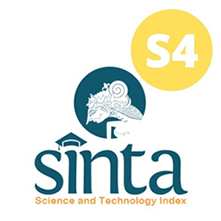Comparing Temperature and Humidity Control Using PID and Fuzzy Logic in a Climatic Chamber
Abstract
The presence of a thermohygrometer is important in some places, especially in hospitals and climate room equipment. A climate chamber is an enclosed space or isolated environment, which will provide the environmental conditions of relative humidity and temperature. In accordance with the Decree of the Minister of Health of the Republic of Indonesia. Certain rooms such as rooms in hospitals require special attention to environmental conditions, such as the surgical process that occurs in the operating room. A thermohygrometer is a tool used to monitor room conditions. The thermoygrometer used must be able to trace the measurement results using certain media. A climate chamber is a device that provides the desired climate regardless of the external environment. The purpose of this study was to analyze the comparison of PID and Fuzzy Logic temperature control systems on the Climatic Chamber (Fuzzy Logic System) device which plays a role in the process of measuring room temperature and humidity in the field. The method used in this study was to compare directly with a previously calibrated thermohygrometer. The measurement results at 25°C have a response time of 7 minutes 30 seconds and an overshoot of 0.1°C, at a temperature of 30°C has a response time of 5 minutes 15 seconds and an overshoot of 0.1°C, at a temperature of 35°C has a response time of 5 minutes 30 seconds and 0.2°C overshoot. At 50%RH Humidity has a response time of 13 minutes 30 seconds, at 60%RH Humidity has a 12 minute response time, At 70%RH Humidity has a 6 minute response time. The measurement results show that fuzzy logic control has more advantages than PID control. Fuzzy logic control has a faster response time to setpoint than PID control and fuzzy logic control has smaller overshoot compared to PID control.

This work is licensed under a Creative Commons Attribution-ShareAlike 4.0 International License.
Authors who publish with this journal agree to the following terms:
- Authors retain copyright and grant the journal right of first publication with the work simultaneously licensed under a Creative Commons Attribution License that allows others to share the work with an acknowledgement of the work's authorship and initial publication in this journal.
- Authors are able to enter into separate, additional contractual arrangements for the non-exclusive distribution of the journal's published version of the work (e.g., post it to an institutional repository or publish it in a book), with an acknowledgement of its initial publication in this journal.
- Authors are permitted and encouraged to post their work online (e.g., in institutional repositories or on their website) prior to and during the submission process, as it can lead to productive exchanges, as well as earlier and greater citation of published work (See The Effect of Open Access).











